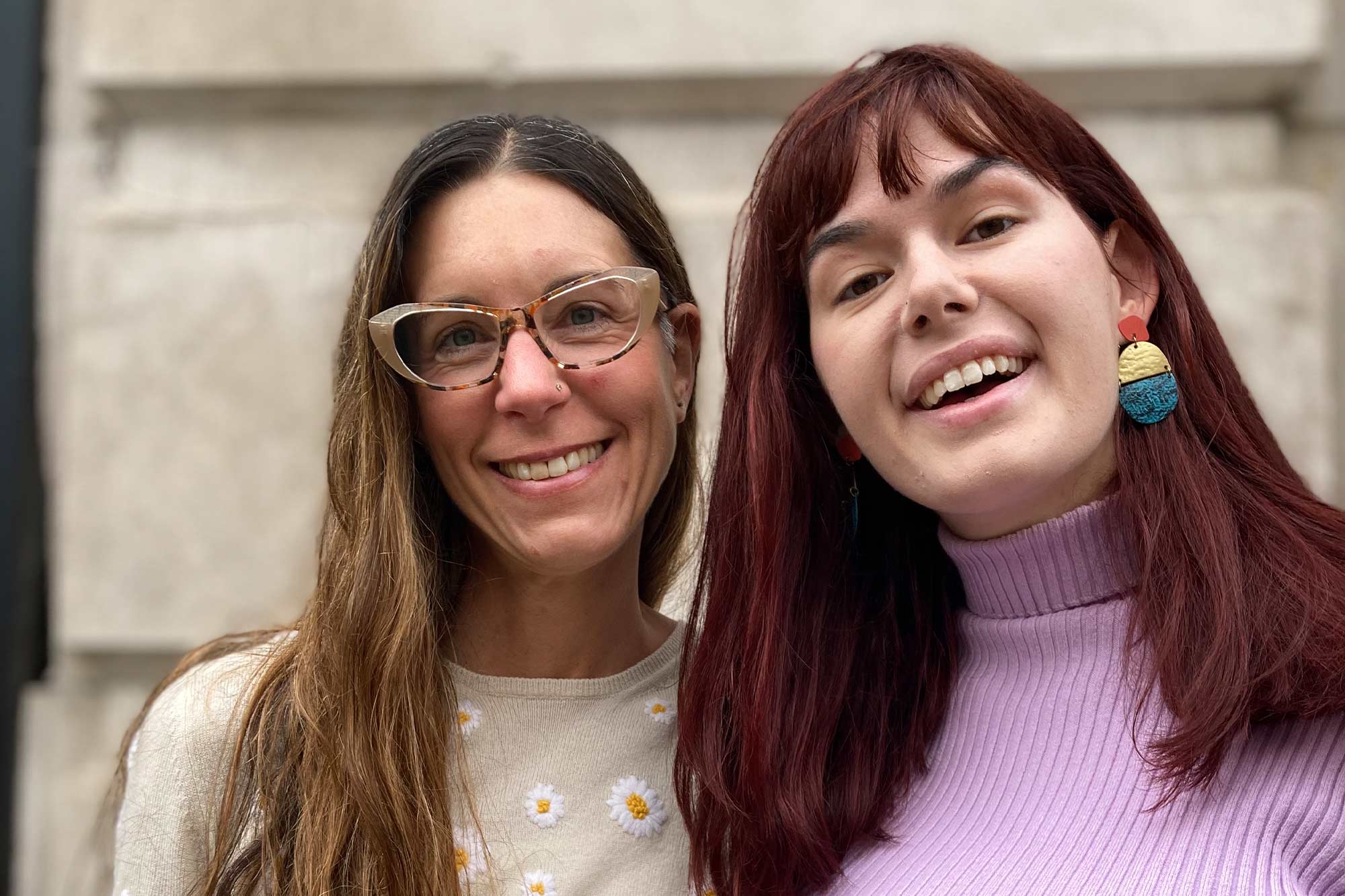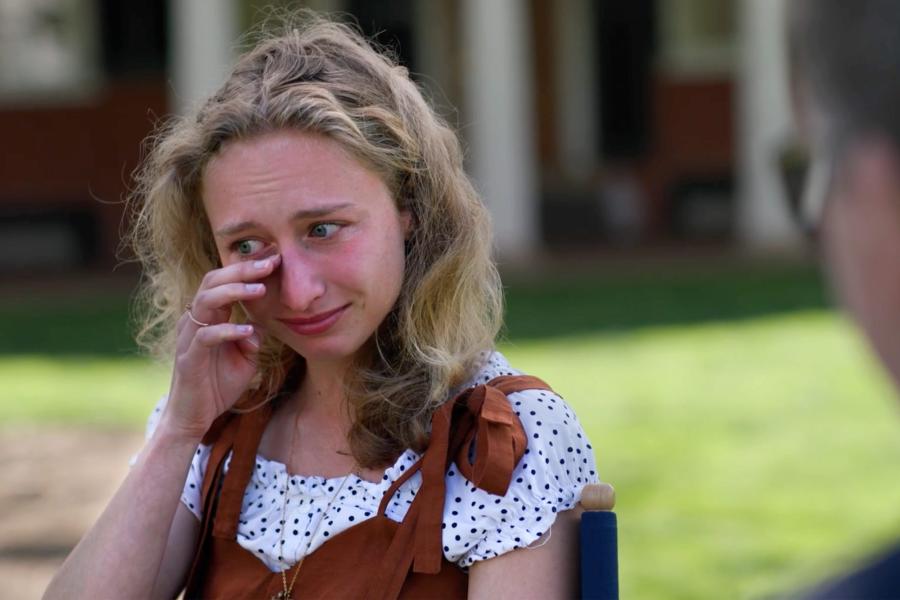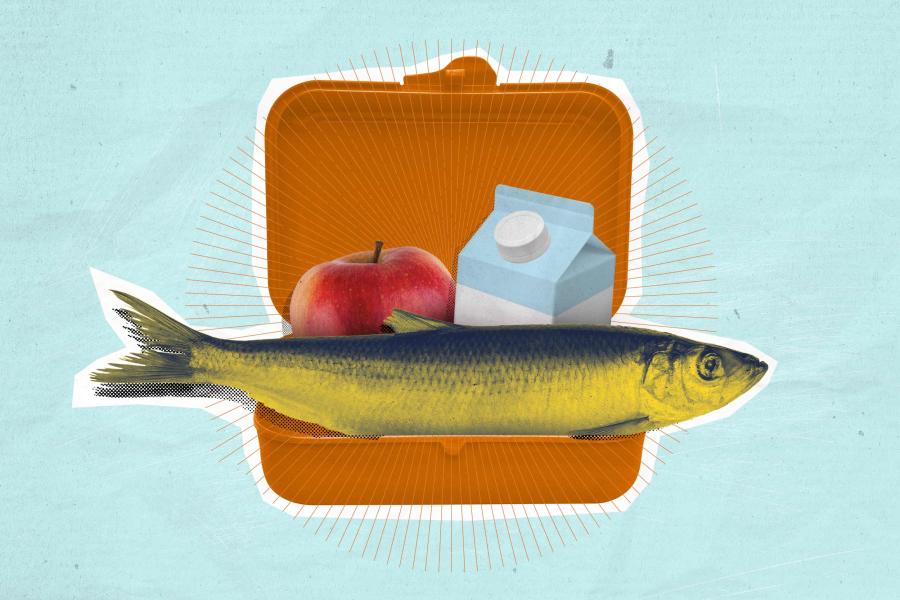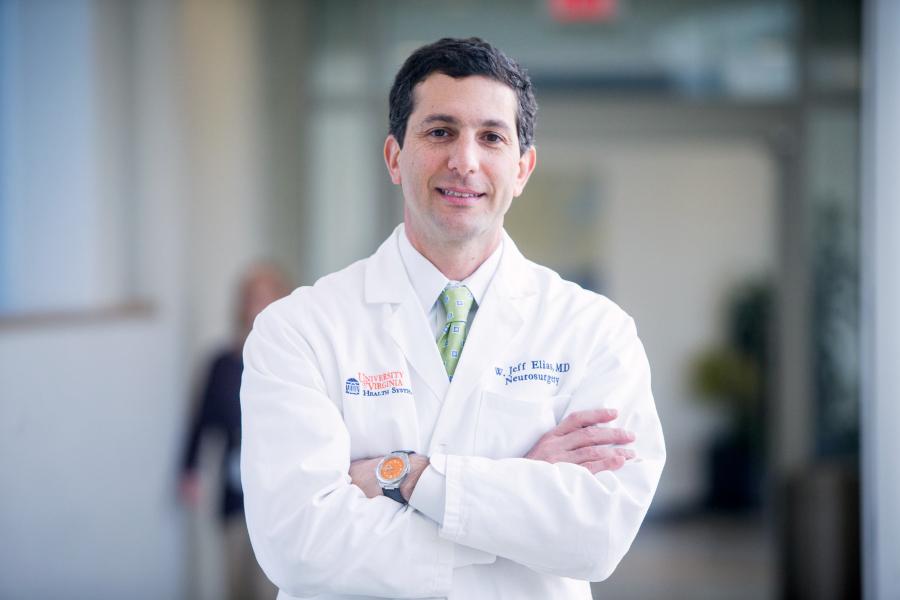A research assistant and a Batten School of Leadership and Public Policy professor published a paper together.
By itself, that’s not remarkable. The University of Virginia is a place full of collaborations between professors and students with brilliant ideas. But this paper, “Eating Disorders Have an Image Problem,” is different. The authors are both survivors.
Professor Lucy Bassett and Batten School alumna Maya Ewart share a powerful bond: They are both eating disorder survivors who want to make a difference. The two met when Ewart was a summer research assistant for Bassett.
Ewart, a double Hoo, was enrolled in Bassett’s course, Feminist Public Policy, when she and her fellow classmates were invited to Bassett’s house for dinner one night.
“I remember it as an intimate evening, it was pouring rain with crazy thunderstorms, and it ended up being this magical moment because we were cozy in my house protected from the wild storm outside,” Bassett said. “Later, during a break from the downpour, a group of students were outside on the porch talking about feminism at UVA. The topic of eating disorders came up and Maya shared that she was a survivor.”
Having struggled with an eating disorder herself, Bassett felt an opportunity to open up. “I had been wanting to write something for a while, and I felt like it was the right time. When Maya shared her story with her classmates that night, I thought, ‘that’s it.’”
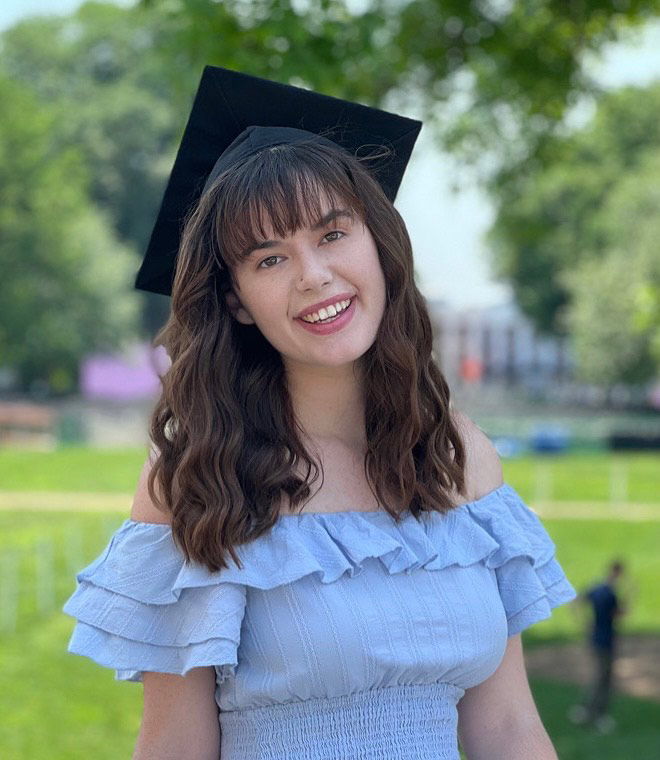
Maya Ewart shared with her professor that she once suffered from an eating disorder. It turned out that the student and the professor had that in common. (Contributed photo)
Shortly thereafter, Bassett approached Ewart and told her own story about battling an eating disorder. “It was humbling that she was willing to share that with me because it’s an unbelievably personal, traumatic thing to go through, let alone to let people know that you’ve gone through it, Ewart said.”
Ewart says Bassett was the first person to approach her and share this kind of story, and that it felt amazing. “I feel like there are a lot of other mental health disorders that people are open about in society and in the media, but you don’t see that with eating disorders, and that’s really sad because they’re just as prevalent and often more fatal,” she said.
In the same conversation, Bassett asked Ewart if she would be interested in a collaborative writing effort. They had worked together before, and Bassett felt they had built some trust in their relationship.
As a teacher, Bassett says she believes in being a real person even if that may be risky at times. “The more people who know you can go through hard things, recover, and still be successful and still work hard, the better,” she said. “Seeing that modeled would’ve really helped me years ago.”
Now, Bassett has the chance to help make that happen for her students.
Writing is one way Bassett tries to change the world, whether it’s about education or migration or eating disorders. “I really wanted to produce something that could help other people and build awareness about this topic. Doing it collaboratively felt meaningful and contributed to my own recovery experience.”
Given her own experiences, Ewart also wanted to help others.
“It was kind of beautiful, because for so long I had been wanting to do something with my story and share my experiences. I was frustrated because I didn’t know what to do or how to do it,” Ewart said.
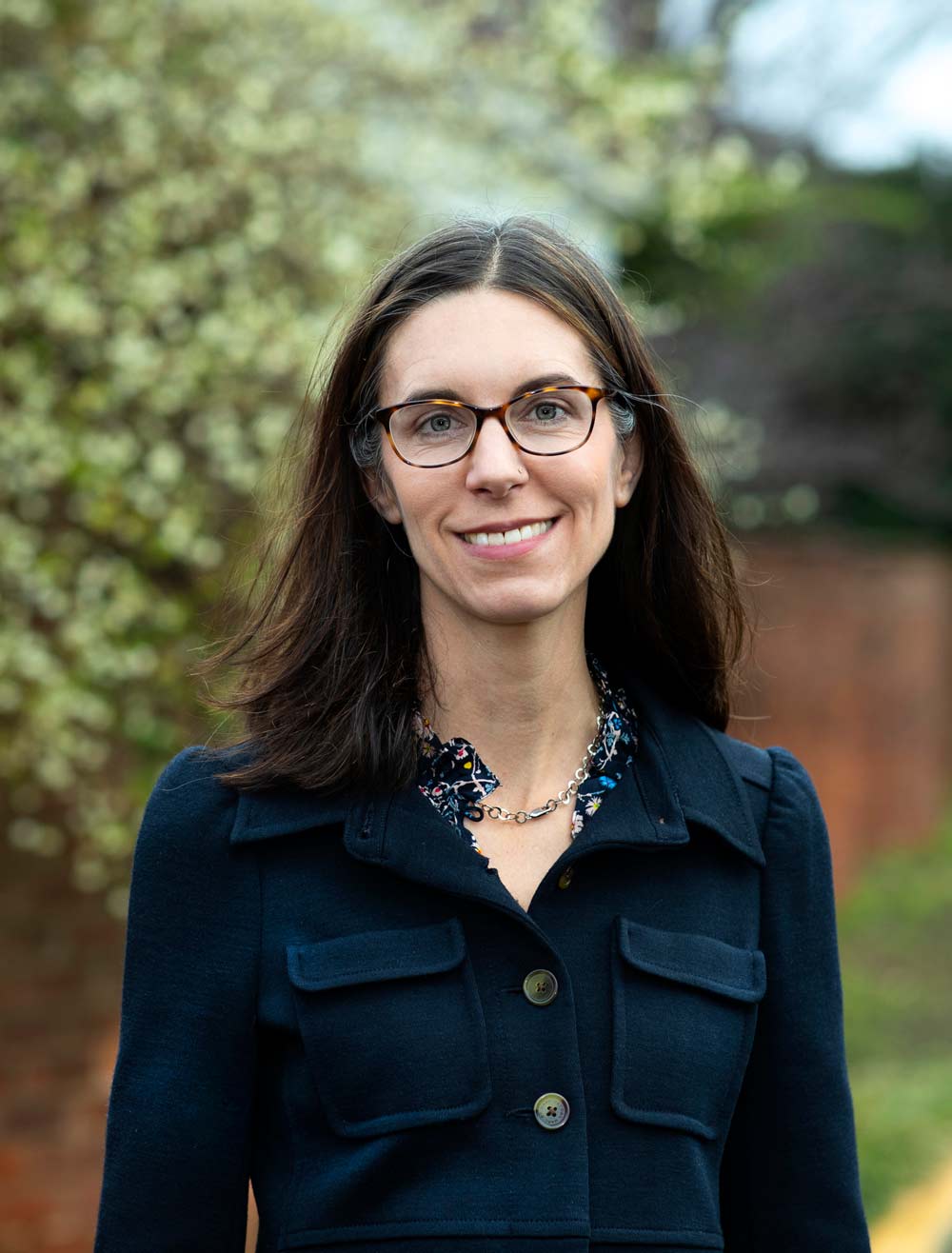
Lucy Bassett said writing the paper with Ewart was important to them both because media and pop-culture depictions of eating disorders are frequently out of touch with reality. (Photo by Dan Addison, University Communications)
Ewart had previously volunteered at an eating disorder recovery facility where she said she learned important lessons. From there, she knew she wanted to continue her engagement and have an impact but didn’t know where to start. When Bassett approached her, “It was a lightbulb moment.”
Ewart eagerly said yes to Bassett’s inquiry, and the two began brainstorming. “When she asked me, I thought, ‘Oh, finally,’ because I knew we could do something together that would be helpful.”
During their early efforts, Bassett saw a TV show that portrayed a non-stereotypical character with an eating disorder, so she and Ewart decided to pursue an analysis of how eating disorders are depicted in the media, compared to reality. The resulting paper illustrates a glaring problem: “Eating Disorders Have an Image Problem,” as the paper’s title states.
Historically, the media has portrayed individuals with eating disorders as thin, young white women under the age of 30. Ewart and Bassett are hoping to change that narrative. They compiled a dataset of nearly 100 characters with eating disorders in TV and movies since the 1980s and then compared their demographics to statistics on eating disorder prevalence. A mere 10% of the dataset characters portrayed were men, although U.S. males make up a third of those with bulimia and a quarter of those with anorexia.
Despite media representation, eating disorders are not limited to teenage girls. Bassett and Ewart highlight that 13% of women over the age of 50 exhibit eating disorder symptoms, even though the peak age for anorexia is 26. Ages 47 and 70 are the peak for bulimia and binge eating disorders, respectively.
The paper also highlights the fact that minorities are extremely underrepresented in the media as suffering from eating disorders. Black adolescents are 50% more likely to engage in eating disorders than their white peers.
Eating disorders also are more common and severe among those who identify as LGBTQ+.
Ewart says she’s a big believer that life imitates art, not the other way around, and many people don’t receive adequate treatment for eating disorders because they have been told that they don’t fit the mold. The mold, Ewart and Bassett discovered, is not representative of those most at risk.
Bassett said the paper targets a few different audiences. “One is the general public, because we want people to know that there isn’t enough diversity in the media depictions. Another is media producers who, perhaps inadvertently, are perpetuating the problem of showing primarily young, white females, insinuating that they are the only people who can suffer from eating disorders.
“Finally, in terms of impact and actual policy change, we eventually want to target medical professionals who only see one lens of potential victims,” Basset said. “They are the front lines of support, and if they aren’t seeing it, there’s trouble.”
Bassett suggests training mechanisms to make medical professionals more aware of the statistics and at-risk populations highlighted in their paper.
“I had doctors when I was very underweight who said, ‘You look great.’ Society’s message is that thin is beautiful. So, if they aren’t seeing it, this is a real problem.”
Ewart argues that eating disorders are a perfect example of how mental and physical health are intertwined. “My one hope coming out of the COVID-19 pandemic is that people realize that we need to take care of our bodies and minds and know that [eating disorders] are not unusual, and those who experience them are not alone.”
If you or someone you know has an eating disorder, call the National Eating Disorder Hotline at 800-931-2237. For resources at the University of Virginia, visit Counseling & Psychological Services, Nutrition Services, Ainsworth Center, LGBTQ+ Center or the Faculty and Employee Assistance Program.
Media Contact
Article Information
April 20, 2024

